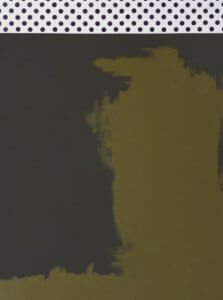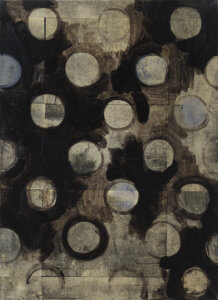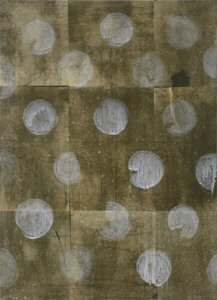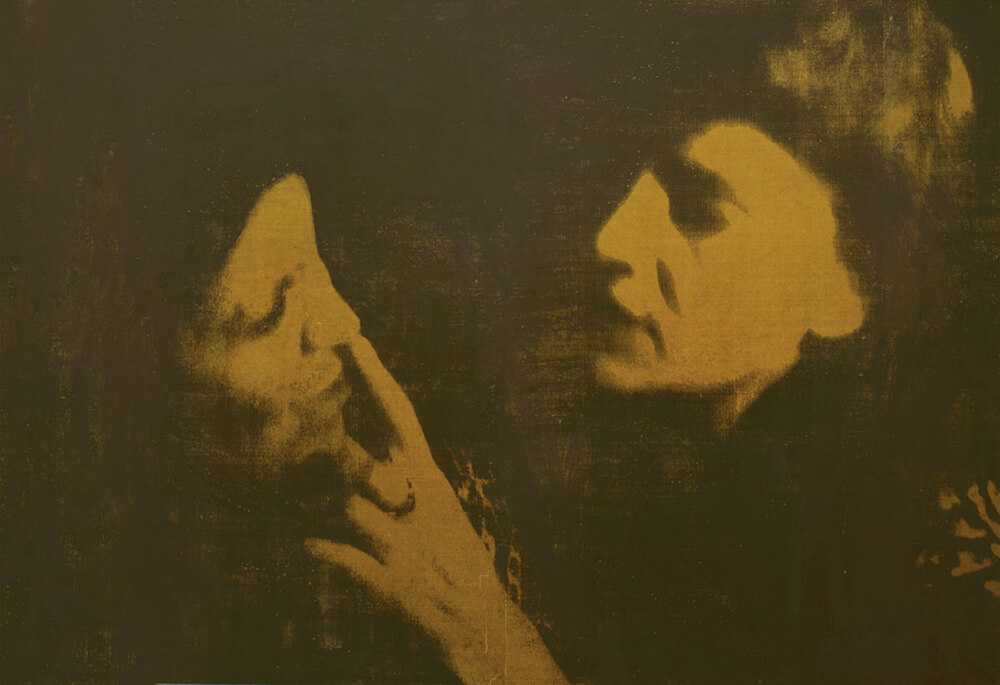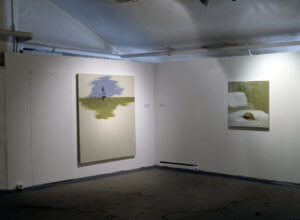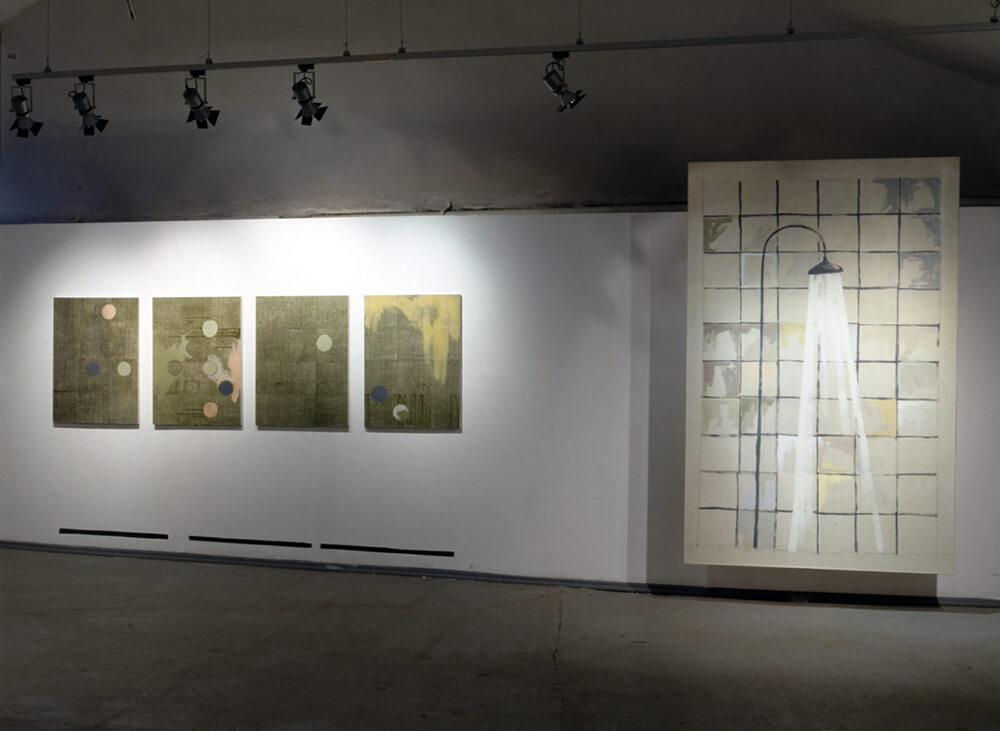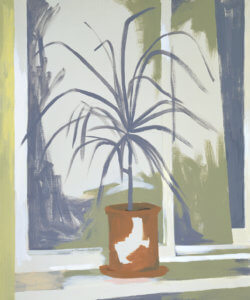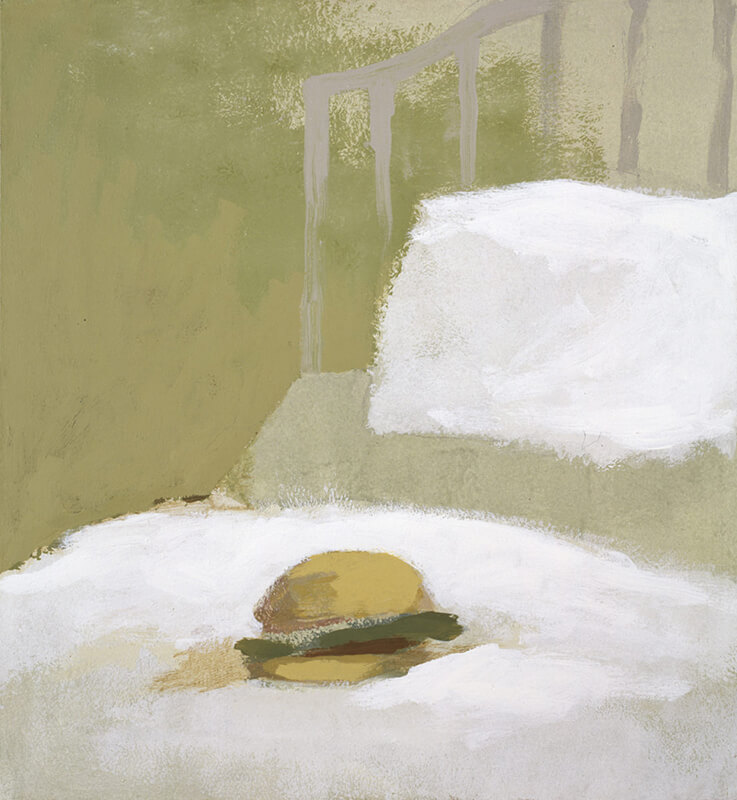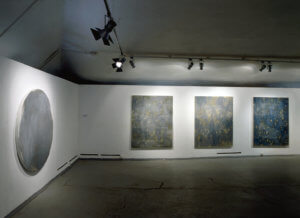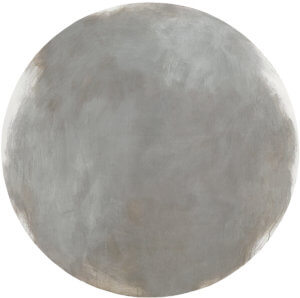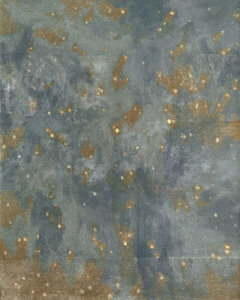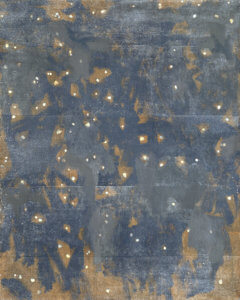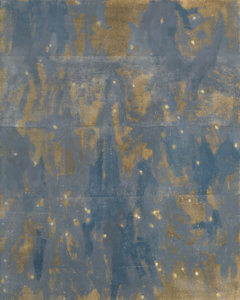Alexandra Paperno. Paintings
2004
National Centre for Contemporary Art (NCCA), Moscow
Juin 10th – 24th, 2004
Exhibition views by Vladislav Efimov
Among Alexandra Paperno’s paintings, there are pieces that defy art historical terminology. Flowers and windowsill. Shower and wall. Surface and dots. They would have to be classified as still lifes. Or, more accurately, as object portraits. Brighter than the stars and clearer than the sky, stronger and more self-assured than self-portraits. They contain a great deal of passion and strength; beauty and the banality of youth sound their charge, unafraid of being positive.
Landscapes soon become wallpaper patterns or incompletely painted walls, defective surfaces, flower-printed calico in pinstripes or polka dots, into something as flat as a collage. This world conveys itself in images, but—according to the textbook—it should have put itself across through tactile sensations. This world is not so close as to be selfevident or familiar to the touch. Yet when it is explored through personal experience, it immediately becomes a fetish – a childhood memory, more tangible than any of the realities that surround us. Here, a palm tree is a fountain, and a shower pours forth nothing less than a divine ray of grey-white light.
These works lie in stark contrast to the self-portraits, childhood photographs of Alexandra, enlarged to gigantic dimensions. In them, one can recognize all the horrors of self-doubt, all the timidity of self-awareness, all the trepidation of irrecognition, all the yearning of incompleteness, all the turbidity of inevitable exhaustion, all the impossibility of insurmountable humility. In this mist of yawning chasms, there is knowledge you gained long ago, knowledge that has always been yours, knowledge that has been lost forever, points of no return that passed unrecognized, in which everything was transparent, unified, and clear all at once.
“The possibility of painting myself small and beautiful.”
Gigantic self-portraits, where a little girl’s face is as tall as an average adult. And an enlarged starry sky, so large that all the colors of the world are not enough to cover it completely, where the stars are as corporeal as old Christmas tree ornaments. Alexandra Paperno belongs to that fortunate type of young artist who has the possibility of externalizing all of the youthful strength of her idealism with scale and scope adequate to monumental form. She paints a starry sky as if it were a still life, at ease and completely sure of herself. She is not concerned with the stars’ real color or full magnitude. Instead, they appear as yellow spots, seen through unrecognizable patches of grey fog, as some kind of cosmic luxury, a view of real stars “from the megapolis.”
“They were very hard to paint, unlike the little circles.”
“Roundwood”, in her studio slang. Girlish polka dot calico becomes a monumental study on the subject of tonal correspondences in the earth-tone sector of the spectrum: natural greens and light browns (called “earth” in professional slang) relate to warm black (“burnt bone”) and to the round borders of exclusively planar forms. There are several polyptychs with “roundwood.” The result is obvious. Alexandra Paperno is just as comfortable with circles as Piet Mondrian was with squares. (Is it a coincidence that the structure of starry polyptychs is related to Mondrian’s early paintings of trees against the sky?) And here comes her supermasterpiece:
“Grey Sun.” Tondo. 2003.
A tondo in the best sense of the word. In this tondo, all the doubt, all the passion of ambition and attitude, failure and exaggeration, that exist on an objective level have disappeared objectively, coming together in the beautiful power and absolute clarity of a painterly masterpiece, lifelike and completely disconnected from life in equal measure, thus uplifting to behold.
Elizaveta Plavinsky
Translated by David Riff
(From an article for Alexandra Paperno’s exhibition “Paintings” at the National Centre for Contemporary Art, Moscow, 2004)
Self-Portraits and Polka Dots: New Paintings by Alexandra Paperno – By Marek Bartelik

